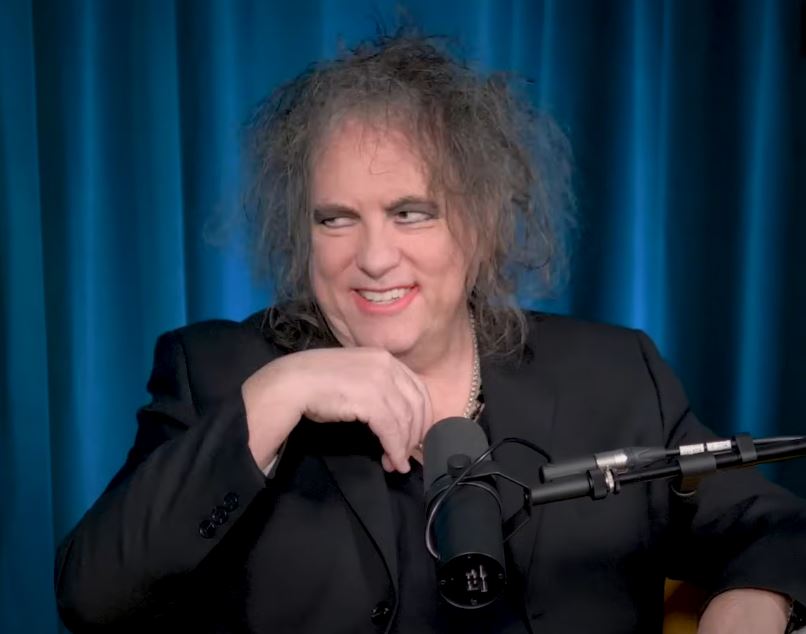
Cure, Robert Smith The typical range for net worth is $25–30 million, which seems insignificant in comparison to the enormous wealth of some music stars. However, it does a remarkable job of demonstrating how an artist can create long-term income without compromising their artistic values. His wealth is the result of a career in which sadness was not only a sound but also a business strategy that turned out to be remarkably adaptable over many years.
Smith never relied on brand deals or fashion endorsements. Album sales, royalties, and touring—where The Cure’s capacity to pack venues across continents has proven to be a highly effective source of income—were the main sources of his income. Disintegration is a key component of his reputation and financial base, with albums like it selling over three million copies in the US alone. His revenue stream has significantly enhanced in the digital age, where streaming increases visibility, thanks to hits like “Friday I’m in Love” and “Just Like Heaven,” which continue to collect royalties due to their timeless appeal.
Bio Data and Career Information
| Category | Details |
|---|---|
| Full Name | Robert James Smith |
| Born | 21 April 1959, Blackpool, England |
| Age | 66 years |
| Height | 5 ft 10 in (1.78 m) |
| Profession | Musician, Singer, Songwriter, Producer |
| Known For | Lead Singer, Guitarist, Songwriter of The Cure |
| Estimated Net Worth | $25–30 Million (Source: Celebrity Net Worth) |
| Genres | Post-Punk, Gothic Rock, New Wave, Alternative Rock |
| Instruments | Vocals, Guitar, Keyboards, Bass |
| Years Active | 1972 – Present |
| Spouse | Mary Theresa Poole (m. 1988) |
| Associated Acts | The Cure, Siouxsie and the Banshees, The Glove |
| Landmark Albums | Disintegration, Wish, Kiss Me, Kiss Me, Kiss Me, Faith |
| Awards | Rock & Roll Hall of Fame Inductee (2019) |
Robert Smith’s journey provides context by demonstrating that consistency, rather than fleeting surges, is frequently the key to financial resiliency. The Cure’s cult-like fan base offered consistent backing, while acts like Duran Duran flourished throughout periods of mainstream pop domination. Songs like “Lovesong” and “Pictures of You” find listeners across generations because to streaming services, which have greatly narrowed the divide between old and new audiences. Particularly helpful was Adele’s rendition of “Lovesong,” which revived sales of a song originally published in 1989.
But his best source of income is still touring. The Cure’s international concerts have brought in tens of millions of dollars even in recent years, although Smith has insisted on keeping ticket prices unexpectedly low. Even though it meant giving up some of the enormous income enjoyed by artists like U2, this decision has shown to be incredibly dependable in fostering goodwill with fans. This choice represents a deliberate balancing act in terms of long-term legacy: making enough money to maintain financial stability without alienating a devoted fan base.
The impact of Robert Smith extends beyond financial institutions. His wild hair and smudged lipstick became emblems of gothic identity, influencing writers like Neil Gaiman and directors like Tim Burton. These kinds of cultural contributions are incredibly resilient; they indirectly prolong the life of The Cure’s music repertoire and keep the band in the public eye. He has established a brand that pays rewards even when he isn’t actively putting out new records by maintaining his cultural influence.
His finances have also been influenced by personal decisions. Smith, who has been married to Mary Poole since 1988, stated that he decided without having children because it allowed him to focus entirely on his music career. Despite being personal, this choice was unexpectedly cost-effective in terms of lifestyle and especially helpful to his creative production, resulting in a discography that continues to have economic value today. Because he chose to live a modest life in Sussex rather than indulge in extravagant extravagance, a large portion of his income went straight into his net worth.
His classmates offer case examples that are remarkably similar but also different. Another depressing legend, Morrissey, amassed millions of dollars, yet scandal has tampered with his earnings. Despite never achieving Smith’s level of commercial success, Siouxsie Sioux maintained her impact. Smith’s financial situation has significantly improved as a result of avoiding scandal, maintaining consistent fan support, and putting his art first.
Nuance is also added by gestures and donations. One of his guitars raised £22,000 for charity at auction in 2012. His reputation as someone who uses riches in ways that are remarkably effective at reinforcing devotion is enhanced by such actions, even though they don’t increase his net fortune.
What is remarkable is how resilient his luck has been. Smith’s music is still being rediscovered by new audiences forty years after the Cure was formed, and streaming services make sure that even songs from the early 1980s are still profitable. His discography has shown to be extremely adaptable, appearing in playlists, covers, and films that present his work to new audiences. In this way, his wealth is not fixed; rather, it is poised to increase, however slowly, as his music continues to be revived by cultural cycles.
